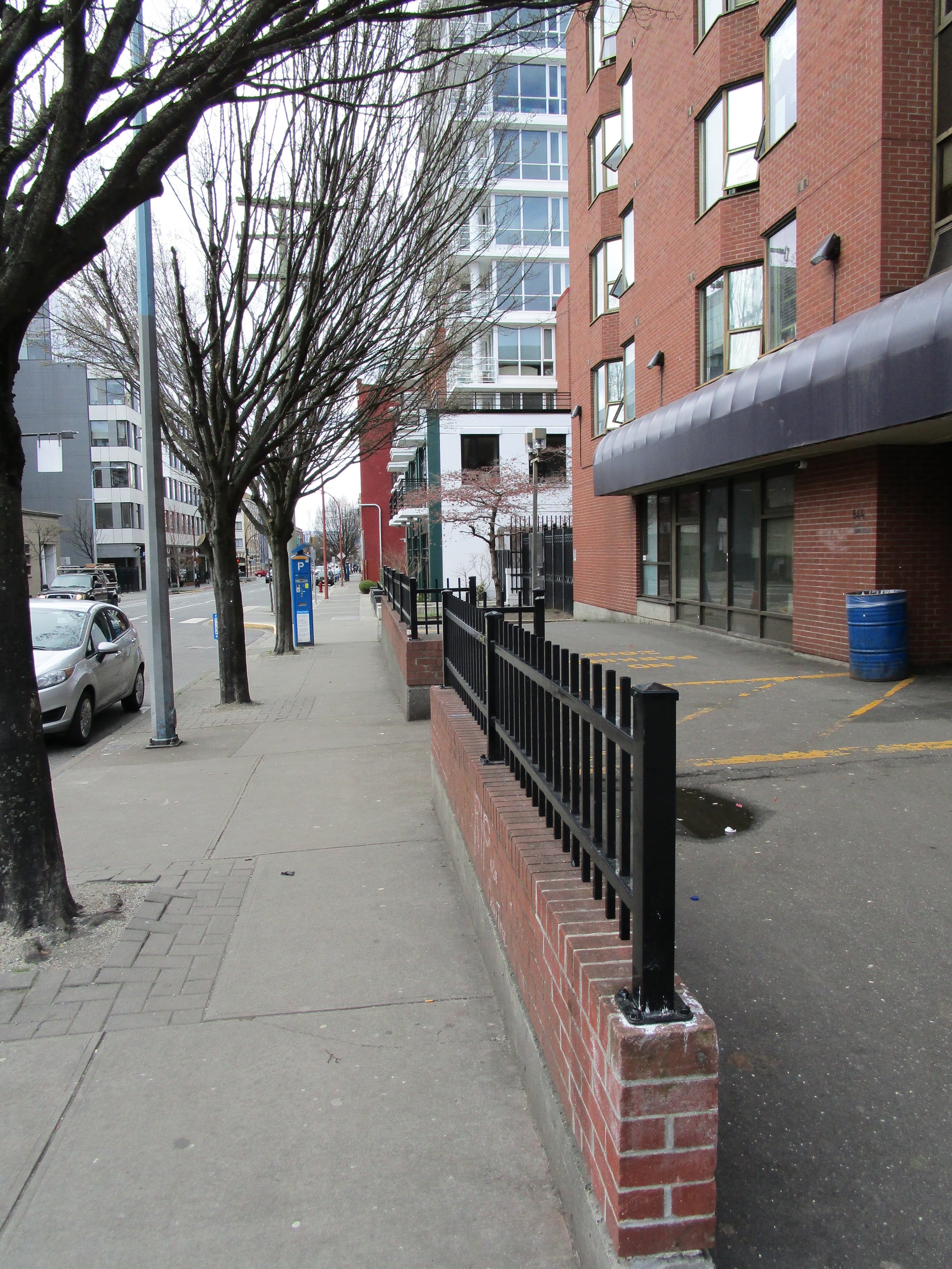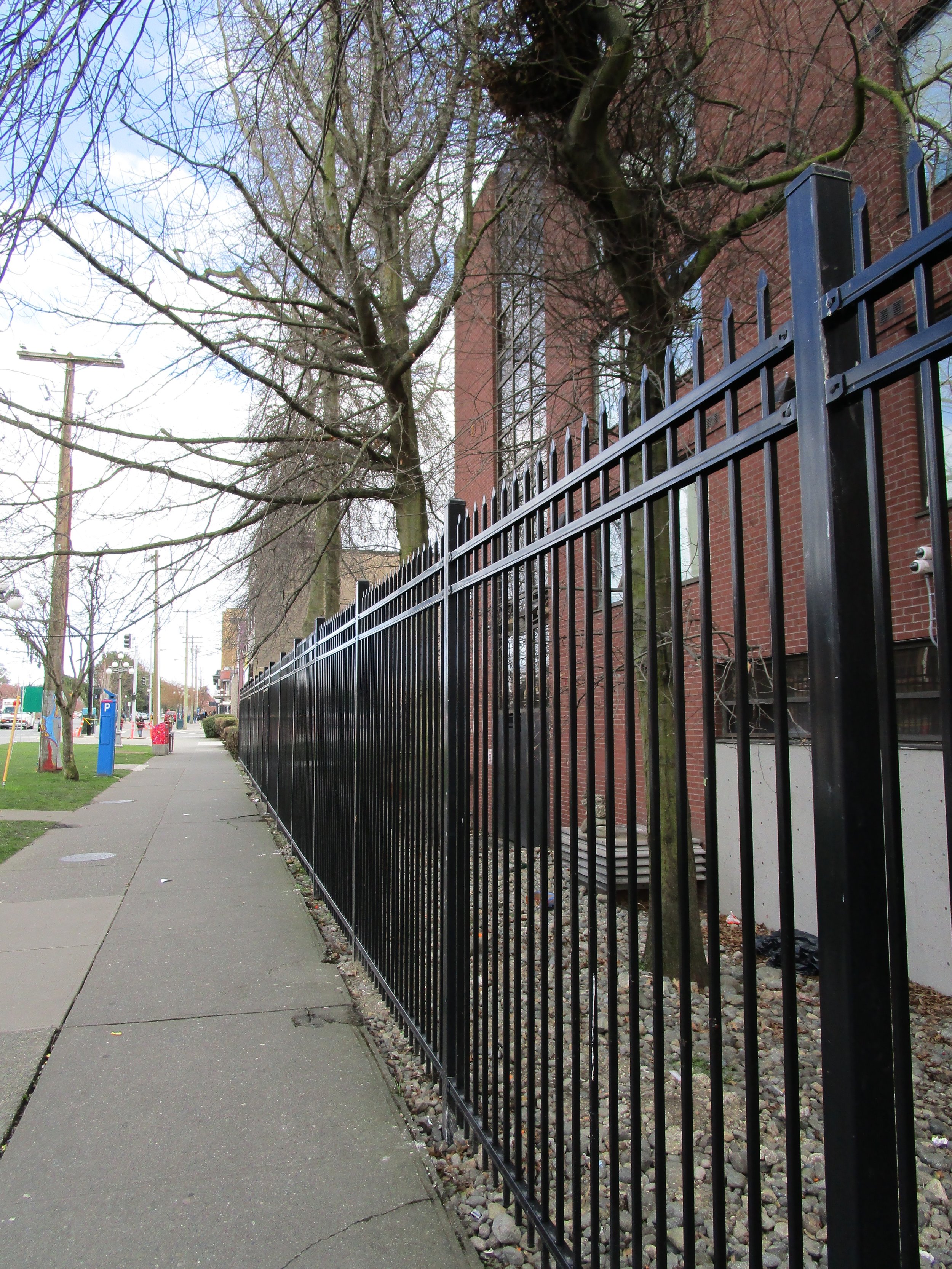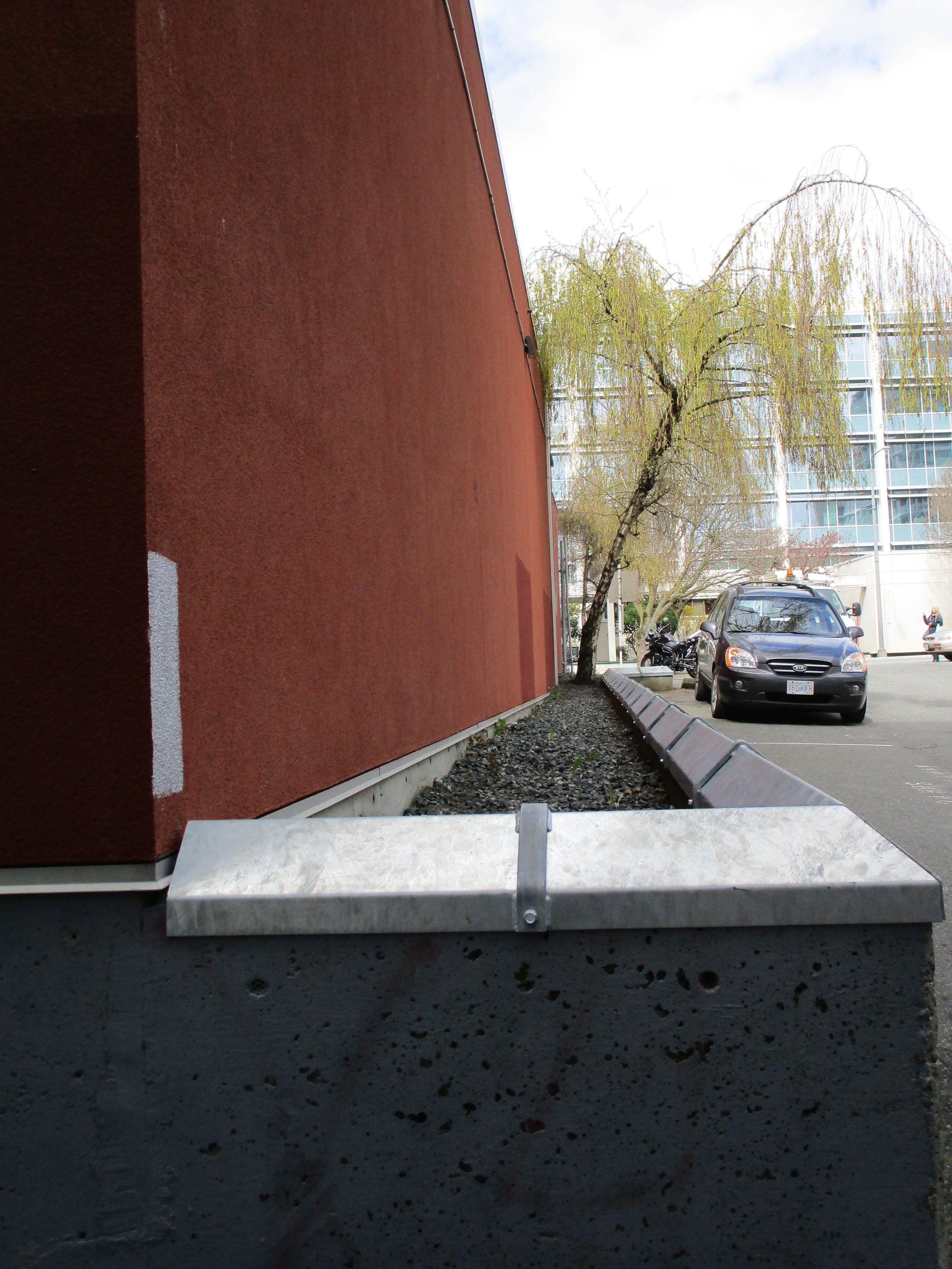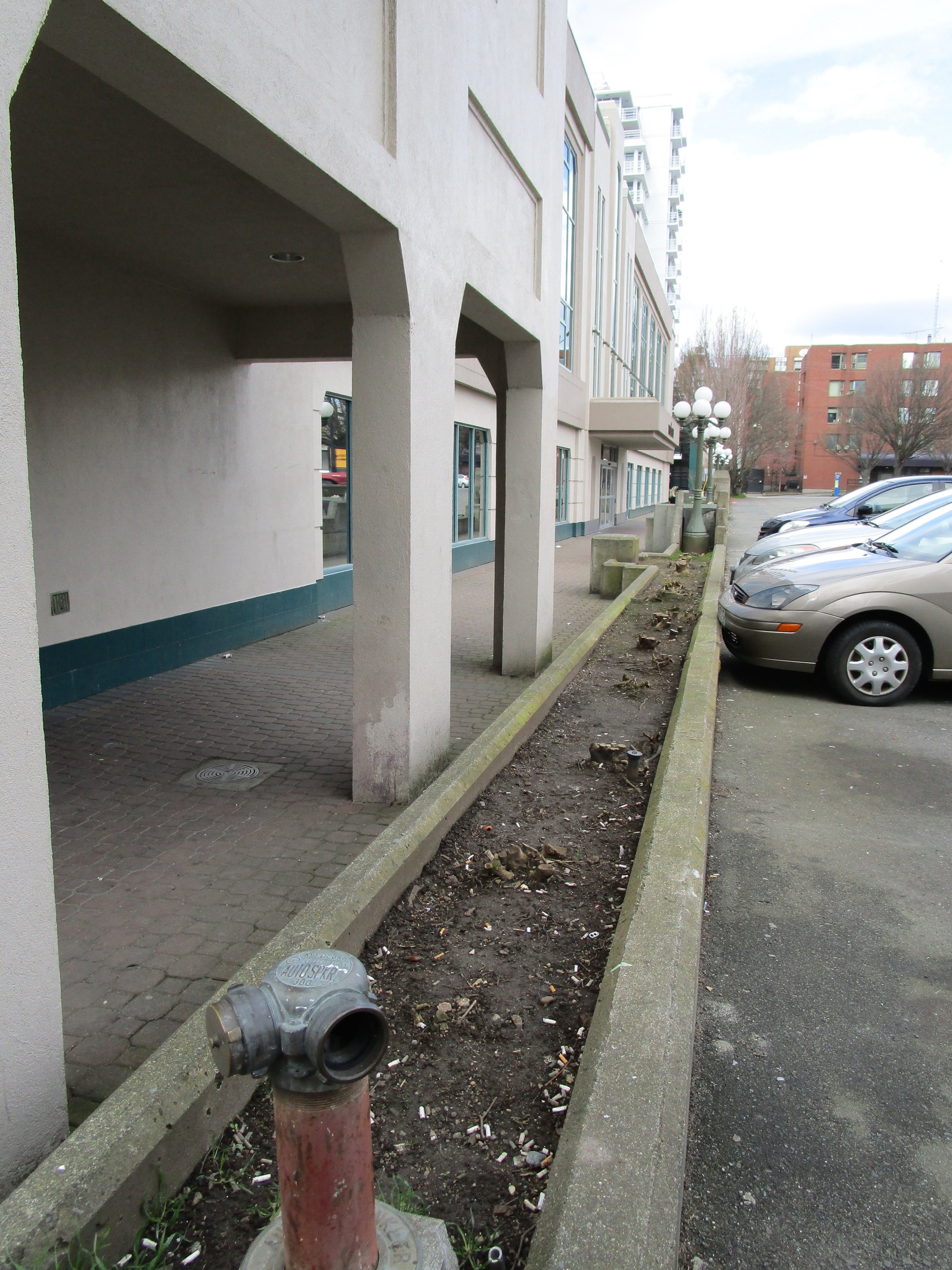VicPD and the BC government: Purveyors of fine Victorian fences
Crime Prevention Through Environmental Design (CPTED) is a city and VicPD-endorsed policy that recommends using fences, rocks, lighting, and surveillance to make spaces unusable or inaccessible to poor and homeless people. Reports I’ve obtained through VicPD’s Freedom of Information system show that CPTED is not about “crime,” but about pushing people further to the margins. And the provincial government is an active participant.
Fences “delight … the passerby.” If you say so, Victoria. Image source: "Guidelines for Fences, Gates and Shutters," prepared for the City of Victoria.
Criminalizing Poverty Through Enforced Displacement
When BC Housing put up a fence on Pandora behind the Portland Hotel Society (PHS) building (a.k.a. Johnson Street Community, or Central Care Home), they were responding to recommendations from a VicPD CPTED report. I asked for all of VicPD’s 2016 CPTED reports to find out what the police were telling people. After initially claiming that everything but the PHS report were “created for private citizens that were victims of crime,” VicPD turned over four reports they had prepared for provincial government agencies.
All of the groups who apparently asked VicPD for these reports – BC Housing; the Ministry of Community, Sport and Cultural Development; the Ministry of Jobs; and the Environmental Assessment Office – have the ear of policy makers who could make real, structural change to provide housing and curb homelessness. Some people in these organizations are policy makers themselves. It’s disappointing that the provincial government’s response to visible homelessness and poverty is to call in the police to tell them how they can stop seeing it.
VicPD and BC Housing: Pushing fences like they’re going out of style
After receiving “inquiries,” the police did a “Safety and Security Audit” of the PHS building in September, 2016. They said CPTED could “help reduce crime, improve safety and influence how people use the space.” The two-page report (plus pictures) is a lot of words about how to use metal, lighting, and surveillance cameras to keep people away.
In the 1990s, VicPD called benches “key crime generators” for “the criminal element” (p. 153), and 20 years later they still believe it. They told BC Housing to “Remove [a] low brick retaining wall” and replace it with “wrought iron fencing or small shrubbery.” Lest anyone think shrubs are just shrubs, that was a clear-cut recommendation from the police to use plants to keep people away. VicPD also suggested “wrought iron fencing along the top of [two] low concrete wall[s].” The metal bars would keep people from sitting on the ledges outside the building, and BC Housing complied:
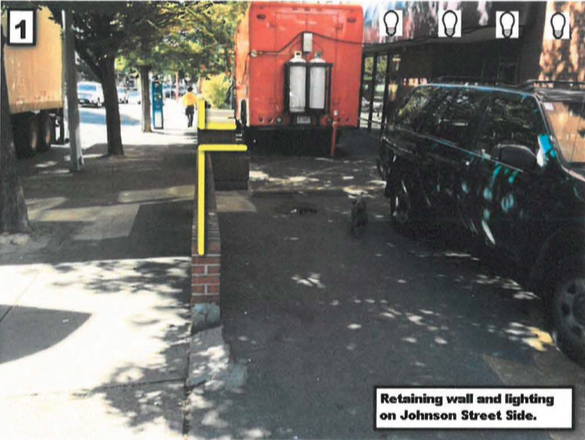


A big part of the PHS report was a suggestion to eliminate two semi-private-public spaces. VicPD told BC Housing to “Install high wrought iron fencing … up to the sidewalk at the rear … of the building,” and to “Move fencing on the [Johnson Street side] up to meet the … corner of the building.” BC Housing acted on both recommendations, removing those areas from use (I’ve written about the Pandora fence before):
Blocking off stairwells, alleys, and other private-public places means people may look for private areas further and further away from existing services and social networks, increasing the danger for those individuals. As the police said in their own press release about fencing on Pandora, the policy has created “some displacement.”

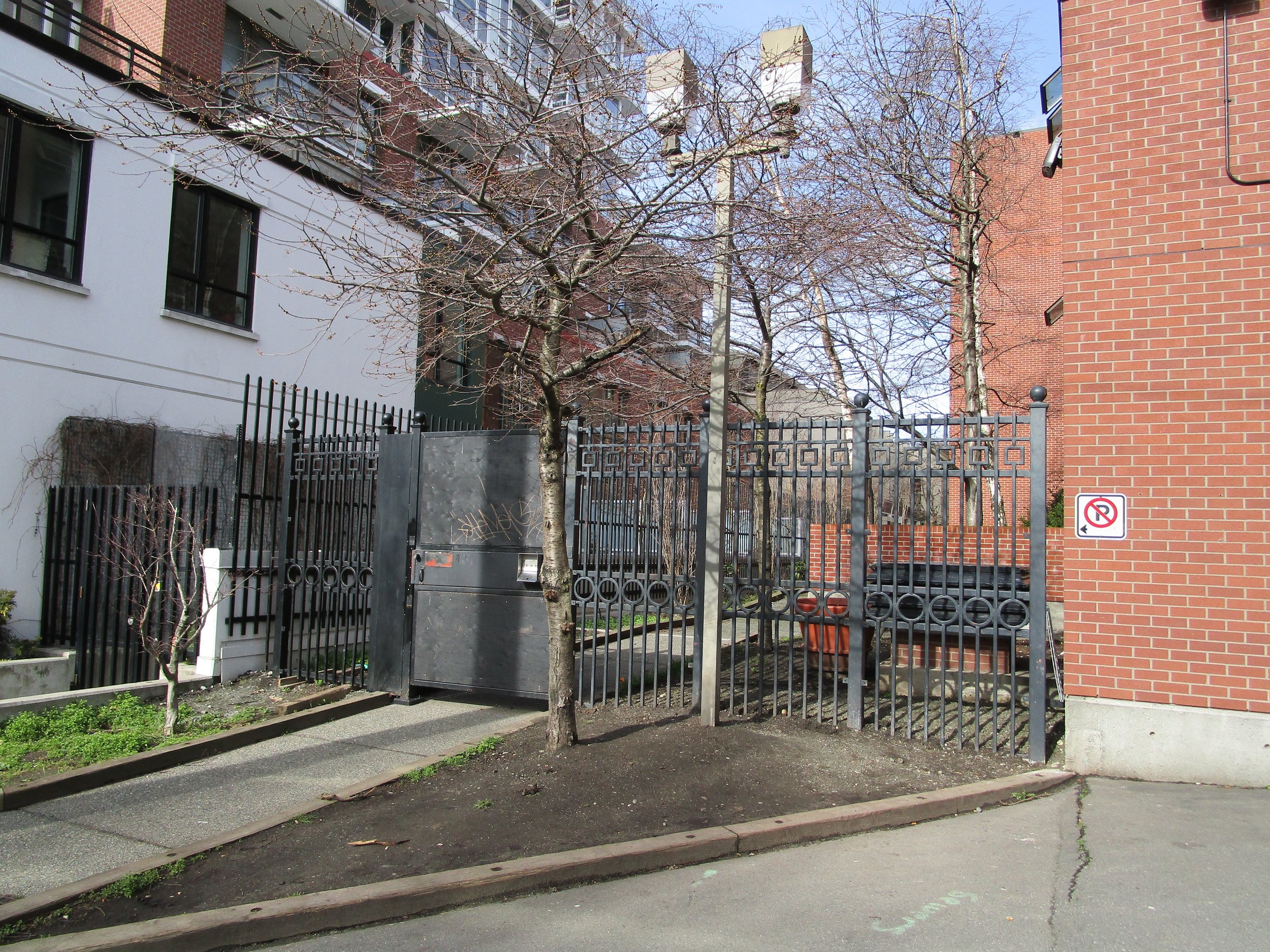
Ministry of Community, Sport and Cultural Development and Ministry of Jobs: Better off CPTED
B.C.’s Ministry of Community, Sport and Cultural Development, whose “purpose” is “to build vibrant and healthy communities that are … liveable, safe” and “socially … responsible” throws that policy out the window at their 800 Johnson Street location. Some of the “socially responsible” recommendations by VicPD were “locked and/or inaccessible” electrical outlets; “permanent ‘police authorized’ no trespass signage”; and “low wrought iron fencing or … a permanent rocky top … to prevent trespassers from congregating” in their parking lot. The Ministry of Jobs works out of the same building as well.*

The photos show that angled metal caps have been installed on ledges in the parking lot to discourage anyone from sitting there. They’ve also included metal clips to stop anyone from skateboarding. New signs warn of possible police enforcement for anyone loitering, camping, soliciting, or trespassing. I didn’t see the words “razor wire” in the city’s CPTED policies – perhaps they consider it “custom detailing” that “adds character to this fence.”
VicPD says the assessment was designed “to see where social disorder problems are occurring.” Another recommendation was to move a fence on Johnson Street to “address issues of trespassing, drug use, abandoned property etc.” by blocking off that area. The gaps in the metal bars are there in order to “maintai[n] natural surveillance into the property.” Anyone who manages to get through those fences won’t find any private space.
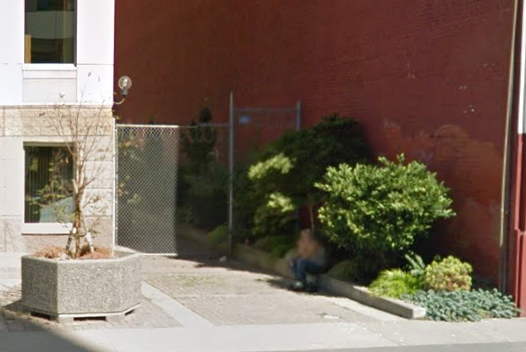
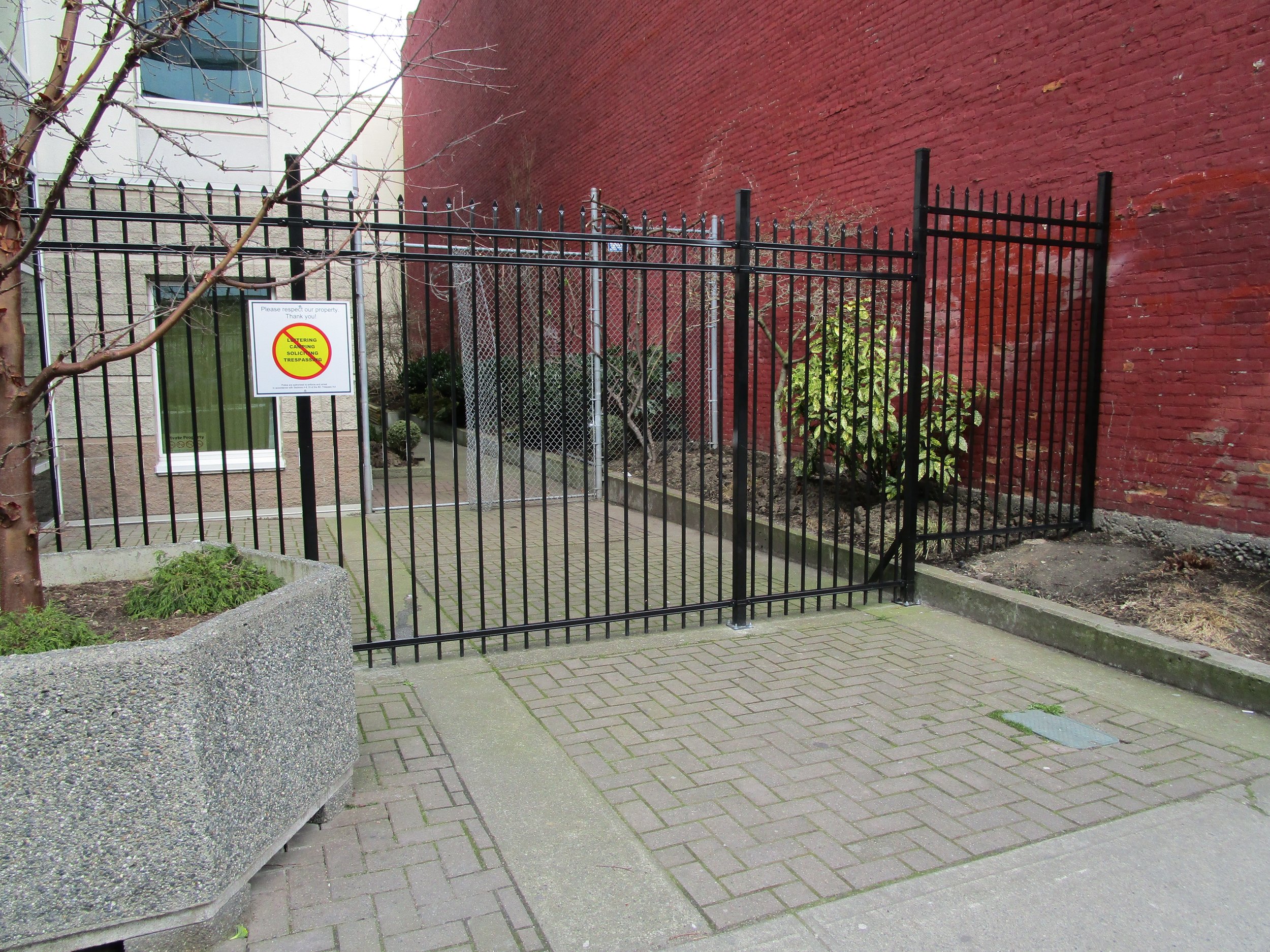
VicPD tells Environmental Assessment Office to cut down plants
B.C’s Environmental Assessment Office told VicPD that “trespassing, open drug/alcohol use and drug paraphernalia/needles/feces etc. … is making some of the staff feel unsafe” at their 836 Yates Street offices.
The review focused on a covered passageway between Yates and Johnson. There used to be plants lining the corridor, which the police said made it “an ideal spot for people to conceal themselves from public view” to “trespass, camp, use drugs, deposit refuse etc.” Put another way, people without housing still want privacy. That shouldn’t come as a shock, but instead VicPD recommended “removing some of the foliage … to allow for ‘natural surveillance.’” The Environmental Assessment Office responded by having all the plants cut down. If that doesn’t keep people away (and it hasn’t, because maybe these people don’t have other places to go), the police had another suggestion: “fil[l] the planters with concrete and rocks” so no one can sit there. And if that doesn’t work, the police recommend building walls to eliminate the private-public space entirely: “As a last resort I would suggest … securing the area, making it only accessible by swipe card.”
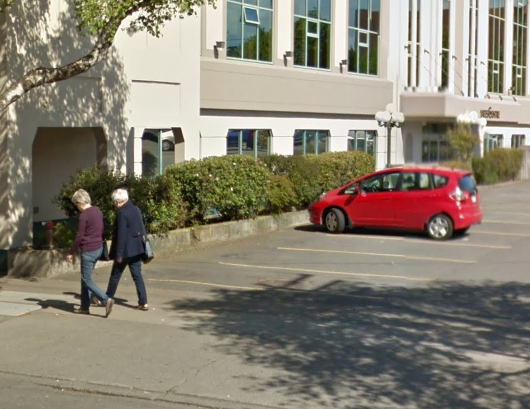
Other suggestions included increasing LED lighting, installing no trespassing signs (presumably so that the police could enforce them), and employing “security patrols … to call police to report any trespassers, illegal activity etc.” VicPD said they did the report in response to staff concerns about ‘feeling unsafe.’ If any staff have been harmed then of course that’s not okay, but permanent displacement of everyone from that space is an extreme response. I would be surprised if those fears weren’t based at least in part on vague feelings that homeless people are inherently dangerous, needle phobia, and so on. At the end of the day it’s still a provincial government agency choosing to call in the police rather than confront the government’s own failings that have contributed to visible poverty and homelessness. If governments wanted to house people as much as they want to protect private property, they could do that. Instead we see a police response.
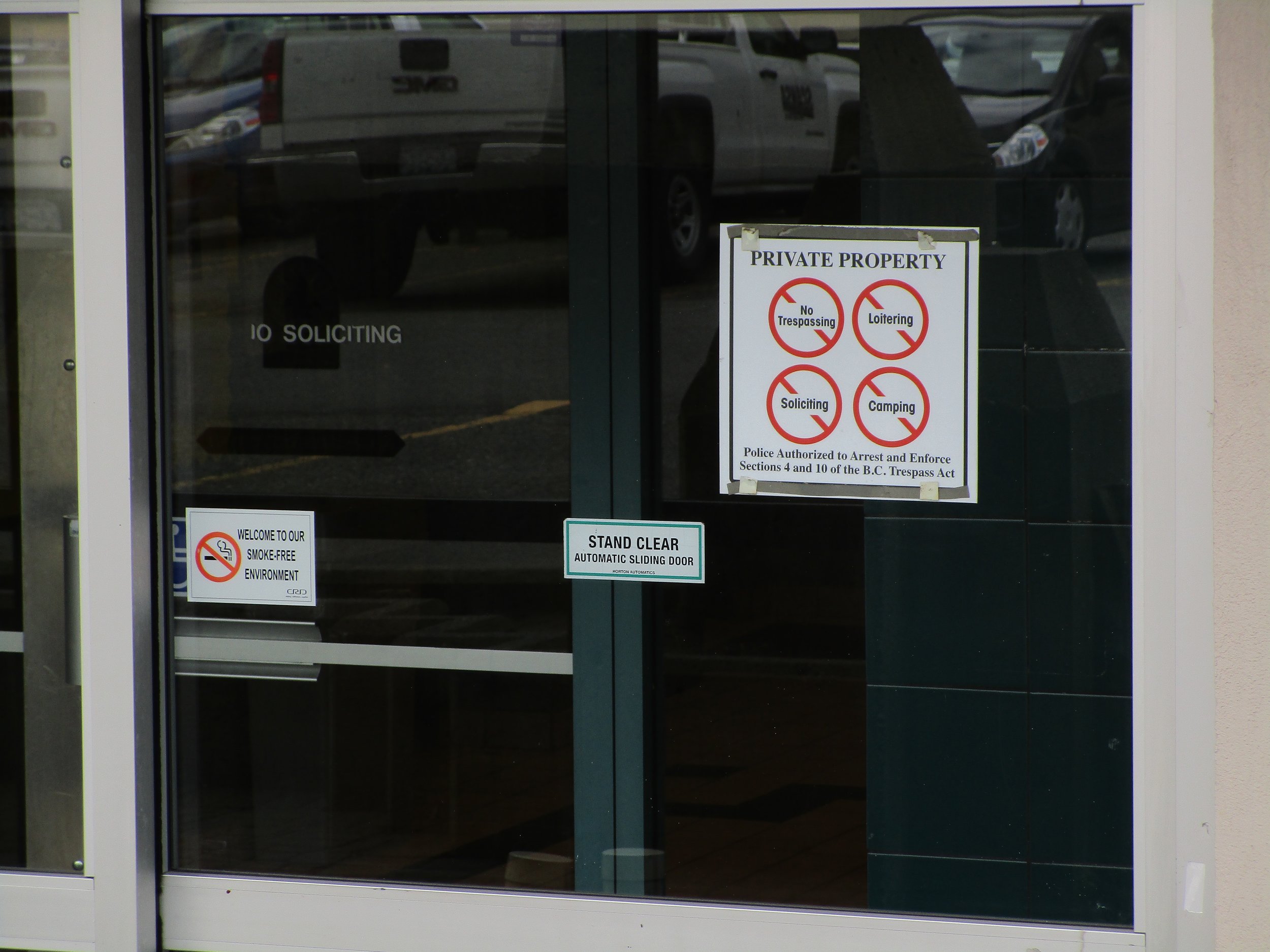
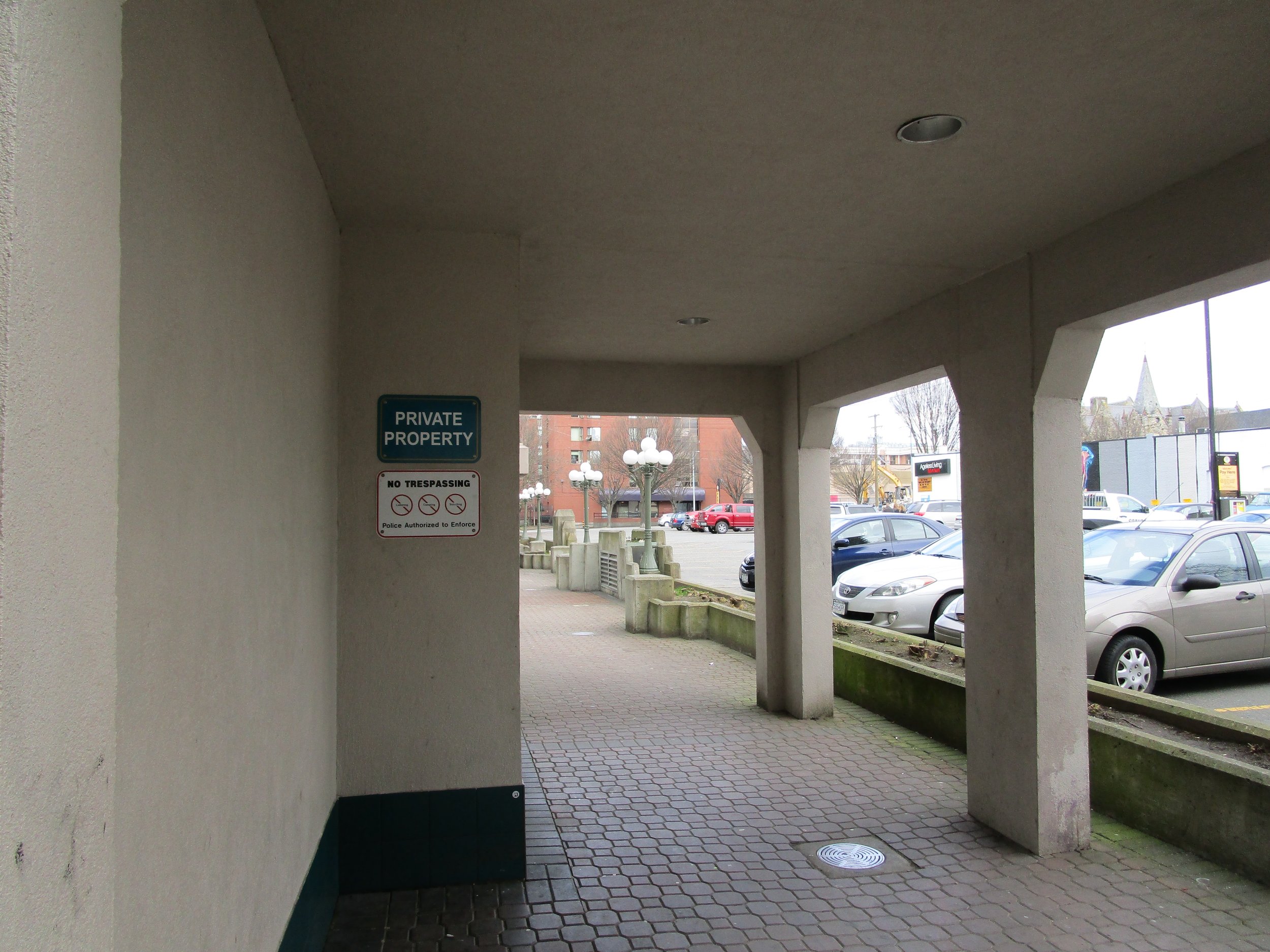
Conclusion
VicPD says CPTED is a preventative measure to “reduce your chances of becoming a victim of crime.” But all of these reports, which were written within three weeks of each other, were about putting up fences, stopping people from sitting down, and generally making it even harder to be homeless in Victoria. The primary “crimes” at stake were loitering and trespassing. These reports make it abundantly clear that VicPD and the province, with the support of the city, are using CPTED to push people to seek out increasingly limited spaces to sleep, hang out, or use drugs.
The failings of our governments’ housing polices brought visible homelessness and poverty to the provincial government’s doorstep, and BC Housing and other agencies turned to the police. They would have done better to look inward, and to their federal and municipal colleagues. The province should not support policies that push people to the margins and put them in real danger.
*It’s not clear which ministry asked for the CPTED report, because the name of the person the report was sent to has been withheld. It’s possible the report was commissioned by the property company that owns the building; however, VicPD said they were happy to follow up with the “ministry,” suggesting that the province was directly involved in this CPTED report. The documents provided by VicPD also included a report on the Super 8 housing facility on Douglas, which I hope to write about at another time.
